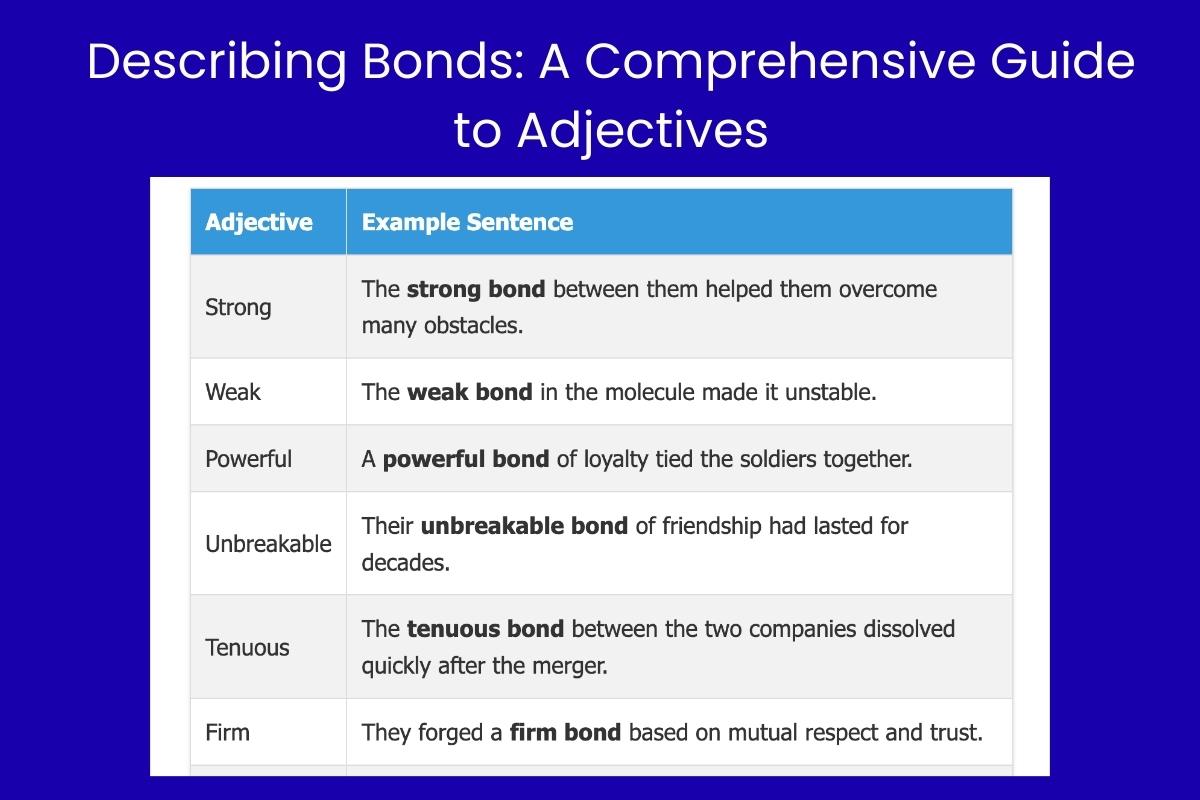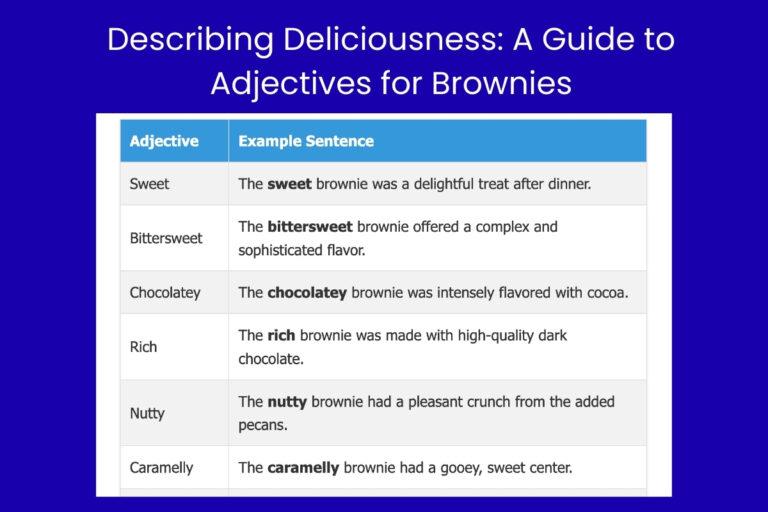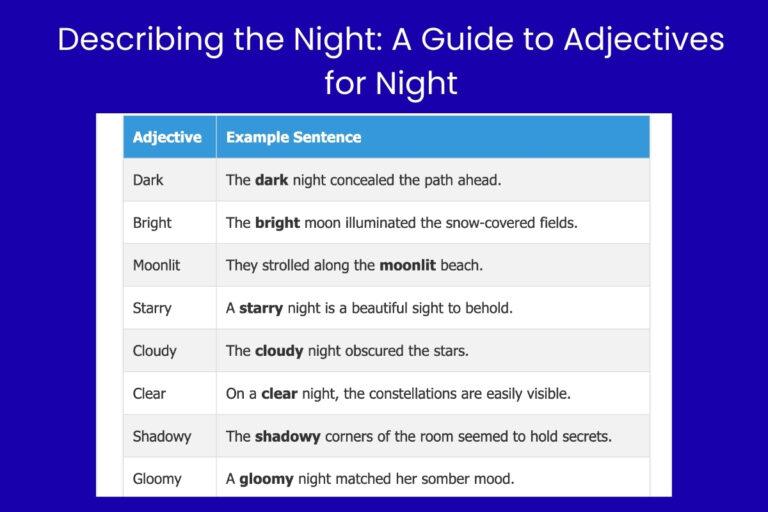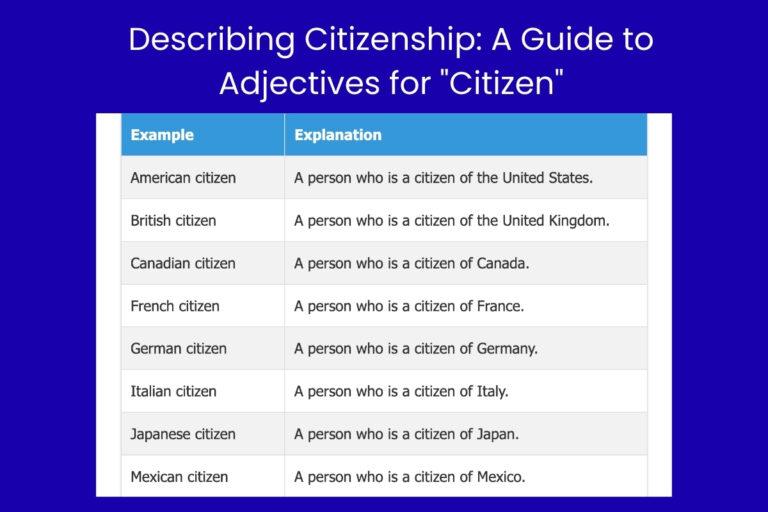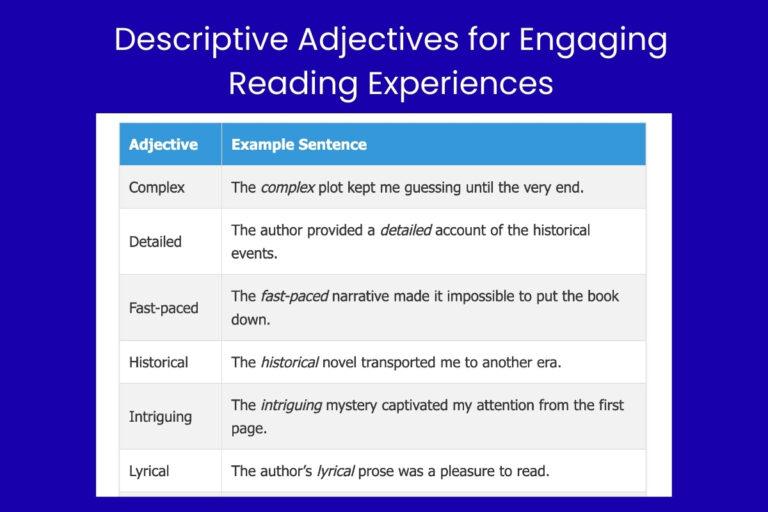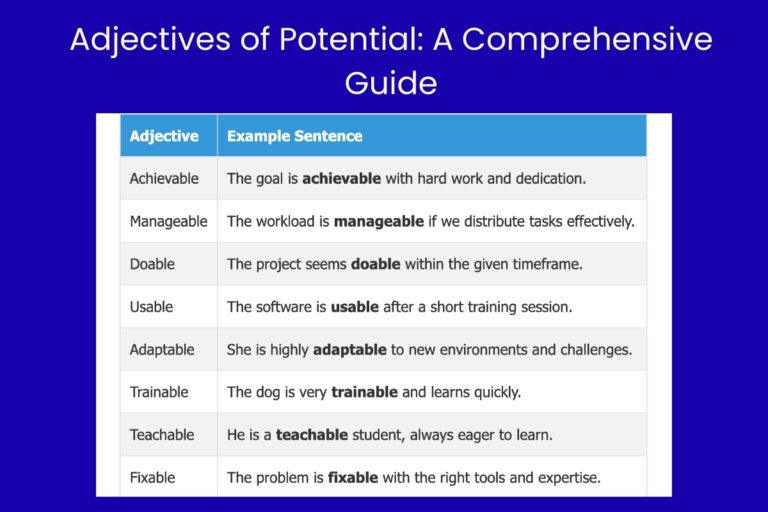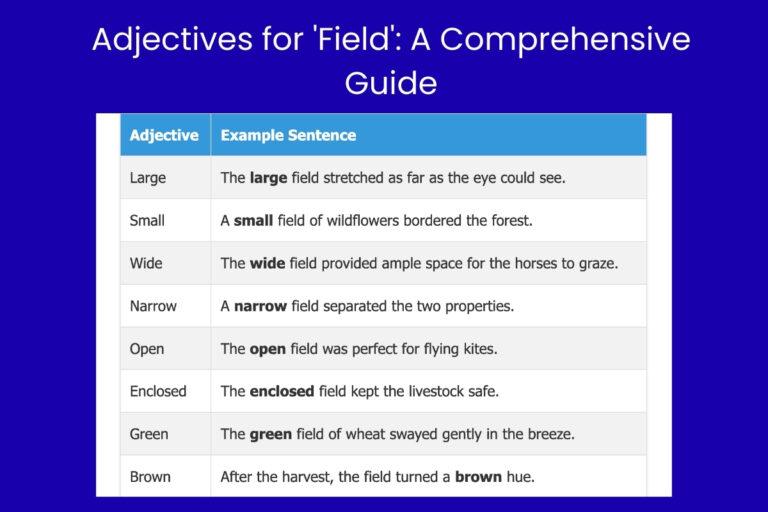Describing Bonds: A Comprehensive Guide to Adjectives
Adjectives are the lifeblood of descriptive language, adding color, detail, and precision to our sentences. When it comes to describing “bond,” whether it’s a financial instrument, a chemical connection, or a personal relationship, the right adjective can make all the difference. This article provides a comprehensive guide to adjectives that can be used with “bond,” exploring their meanings, usage, and nuances. Whether you’re a student, a writer, or simply someone looking to improve their English vocabulary, this guide will help you master the art of describing bonds effectively and accurately.
We will cover a wide range of adjectives, from those describing the strength of a bond to those detailing its specific characteristics and context. This exploration will enhance your understanding of English grammar and equip you with the tools to express yourself with greater clarity and sophistication. Get ready to dive into the world of adjectives and unlock the power of precise description!
Table of Contents
- Introduction
- Definition of “Bond” and the Role of Adjectives
- Structural Breakdown: Adjectives and Noun Phrases
- Types and Categories of Adjectives for “Bond”
- Examples of Adjectives Used with “Bond”
- Usage Rules for Adjectives with “Bond”
- Common Mistakes When Using Adjectives with “Bond”
- Practice Exercises
- Advanced Topics: Nuances and Contextual Usage
- Frequently Asked Questions
- Conclusion
Definition of “Bond” and the Role of Adjectives
The word “bond” is multifaceted, possessing several distinct meanings depending on the context. Primarily, a bond signifies a connection or link. This can manifest in various forms, including:
- A financial instrument: A debt security in which an investor loans money to an entity (corporate or governmental) which borrows the funds for a defined period of time at a variable or fixed interest rate.
- A chemical bond: The attractive force that holds atoms together in molecules and crystals.
- An interpersonal connection: A relationship or tie between people, such as a family bond or a friendship.
- A physical restraint: Something used to tie someone or something up, preventing movement or escape.
Adjectives play a crucial role in specifying the nature and characteristics of a bond. They provide essential details that help us understand the specific type of bond being discussed, its strength, its qualities, and its context. Without adjectives, our understanding of “bond” remains general and vague. Adjectives bring clarity and precision to our communication.
Structural Breakdown: Adjectives and Noun Phrases
In English grammar, adjectives typically precede the noun they modify. This is the most common structure. The basic structure is: Adjective + Noun. For example, “strong bond,” “municipal bond,” and “covalent bond” all follow this structure.
However, adjectives can also appear after linking verbs (such as be, seem, become, appear). In this case, the adjective describes the subject of the sentence. For example, “The bond is strong,” or “The relationship became a strong bond.”
Adjectives can also be part of more complex noun phrases, which might include articles, other adjectives, and prepositional phrases. For example: “a strong family bond,” “the highly anticipated municipal bond,” or “a strong bond between friends.” Understanding how adjectives fit into these structures is crucial for constructing grammatically correct and meaningful sentences.
Types and Categories of Adjectives for “Bond”
Adjectives for “bond” can be categorized based on the aspect of the bond they describe. Here are some key categories:
Adjectives Describing Strength
These adjectives indicate the degree of connection or force associated with the bond. Examples include: strong, weak, powerful, unbreakable, tenuous, firm, solid, fragile, robust.
Adjectives Describing Financial Bonds
These adjectives specify the type, risk, or characteristics of a financial bond. Examples include: municipal, corporate, government, high-yield, investment-grade, tax-exempt, callable, convertible, zero-coupon.
Adjectives Describing Chemical Bonds
These adjectives describe the nature and properties of chemical bonds. Examples include: covalent, ionic, metallic, hydrogen, single, double, triple, polar, nonpolar.
Adjectives Describing Relationship Bonds
These adjectives describe the qualities and characteristics of interpersonal bonds. Examples include: familial, friendly, romantic, close, distant, supportive, healthy, toxic, enduring, deep-seated.
Evaluative Adjectives
These adjectives express a judgment or opinion about the bond. Examples include: valuable, important, essential, beneficial, detrimental, precious, significant.
Descriptive Adjectives
These adjectives provide general descriptions of the bond, often relating to its physical or abstract qualities. Examples include: new, old, complex, simple, visible, invisible.
Examples of Adjectives Used with “Bond”
This section provides extensive examples of adjectives used with “bond,” categorized by the types discussed above. Each table contains a variety of sentences to illustrate the different ways these adjectives can be used.
Examples for Strength Adjectives
The following table showcases how adjectives describing strength can be used with the word “bond” in various contexts. These examples highlight the intensity and resilience, or lack thereof, associated with the bond.
| Adjective | Example Sentence |
|---|---|
| Strong | The strong bond between them helped them overcome many obstacles. |
| Weak | The weak bond in the molecule made it unstable. |
| Powerful | A powerful bond of loyalty tied the soldiers together. |
| Unbreakable | Their unbreakable bond of friendship had lasted for decades. |
| Tenuous | The tenuous bond between the two companies dissolved quickly after the merger. |
| Firm | They forged a firm bond based on mutual respect and trust. |
| Solid | The solid bond of family gave her strength during difficult times. |
| Fragile | The fragile bond between the nations required careful diplomacy. |
| Robust | The robust bond market indicated a healthy economy. |
| Resilient | The resilient bond between the siblings helped them navigate their childhood. |
| Indissoluble | They shared an indissoluble bond that time could not erase. |
| Durable | The durable bond of marriage sustained them through the years. |
| Lasting | They formed a lasting bond during their time in the military. |
| Secure | The secure bond provided a sense of stability and safety. |
| Loose | A loose bond allowed for greater independence and flexibility. |
| Tight | The athletes developed a tight bond through rigorous training. |
| Close-knit | The close-knit bond within the community fostered a strong sense of belonging. |
| Unwavering | Their unwavering bond of support helped each other through tough times. |
| Deep | A deep bond of trust and understanding grew between them. |
| Superficial | The superficial bond between the colleagues didn’t extend beyond work. |
| Binding | The binding bond of tradition kept the community together. |
| Enduring | The enduring bond of friendship remained strong despite the distance. |
| Inextricable | Their lives were linked by an inextricable bond of fate. |
| Unseverable | The unseverable bond between mother and child is a powerful force. |
Examples for Financial Adjectives
This table provides examples of adjectives used to describe financial bonds, focusing on their characteristics, risk levels, and issuers. Understanding these adjectives is crucial for investors and finance professionals.
| Adjective | Example Sentence |
|---|---|
| Municipal | The city issued a municipal bond to fund the new school. |
| Corporate | The company offered a corporate bond to raise capital for expansion. |
| Government | The government bond is considered a safe investment. |
| High-yield | High-yield bonds offer the potential for greater returns, but also carry higher risk. |
| Investment-grade | Investment-grade bonds are considered to have a lower risk of default. |
| Tax-exempt | The tax-exempt bond offered significant savings to investors. |
| Callable | The callable bond allowed the issuer to redeem it before maturity. |
| Convertible | The convertible bond could be exchanged for shares of the company’s stock. |
| Zero-coupon | The zero-coupon bond does not pay periodic interest. |
| Sovereign | The sovereign bond is issued by a national government. |
| Secured | The secured bond is backed by specific assets, reducing risk for investors. |
| Unsecured | The unsecured bond is not backed by collateral, making it riskier. |
| Fixed-rate | The fixed-rate bond offers a stable and predictable income stream. |
| Floating-rate | The floating-rate bond‘s interest rate adjusts with market conditions. |
| Inflation-indexed | The inflation-indexed bond protects investors from rising prices. |
| Perpetual | The perpetual bond has no maturity date and pays interest indefinitely. |
| Subordinated | The subordinated bond has a lower priority in case of default. |
| Senior | The senior bond has a higher priority in case of default. |
| Discount | The discount bond is sold below its face value. |
| Premium | The premium bond is sold above its face value. |
| Emerging-market | The emerging-market bond carries higher risk but potentially higher returns. |
| Green | The green bond finances environmentally friendly projects. |
| Social | The social bond supports projects with positive social outcomes. |
| Sustainable | The sustainable bond promotes environmentally and socially responsible investing. |
| Agency | The agency bond is issued by a government-sponsored enterprise. |
| Treasury | The treasury bond is issued by the U.S. Department of the Treasury. |
Examples for Chemical Adjectives
This table illustrates the use of adjectives to describe chemical bonds, focusing on their properties and types. These adjectives are essential for understanding molecular structures and chemical reactions.
| Adjective | Example Sentence |
|---|---|
| Covalent | A covalent bond is formed by the sharing of electrons. |
| Ionic | An ionic bond is formed by the transfer of electrons. |
| Metallic | A metallic bond is characteristic of metals and their alloys. |
| Hydrogen | A hydrogen bond is a relatively weak bond between a hydrogen atom and another electronegative atom. |
| Single | A single bond involves the sharing of one pair of electrons. |
| Double | A double bond involves the sharing of two pairs of electrons. |
| Triple | A triple bond involves the sharing of three pairs of electrons. |
| Polar | A polar bond occurs when electrons are shared unequally between atoms. |
| Nonpolar | A nonpolar bond occurs when electrons are shared equally between atoms. |
| Strong | The strong bond in diamond makes it incredibly hard. |
| Weak | The weak bond between water molecules allows them to easily change state. |
| Coordinate | A coordinate bond is formed when one atom provides both electrons in the shared pair. |
| Pi | A pi bond is a covalent chemical bond where two lobes of one involved electron orbital overlap two lobes of the other involved electron orbital. |
| Sigma | A sigma bond is a covalent chemical bond where electron density is concentrated directly between the bonding atoms. |
| Delocalized | The delocalized bond contributes to the stability of the molecule. |
| Resonant | The resonant bond structure explains the molecule’s unique properties. |
| Intermolecular | The intermolecular bond affects the physical properties of the substance. |
| Intramolecular | The intramolecular bond determines the shape and reactivity of the molecule. |
| Hydrophobic | The hydrophobic bond is important in protein folding. |
| Electrostatic | The electrostatic bond contributes to the overall stability of the structure. |
Examples for Relationship Adjectives
The following table provides examples of adjectives used to describe relationship bonds, focusing on their qualities, characteristics, and dynamics. These examples illustrate the diverse nature of human connections.
| Adjective | Example Sentence |
|---|---|
| Familial | The familial bond is often the strongest and most enduring. |
| Friendly | They shared a friendly bond based on common interests and mutual respect. |
| Romantic | Their romantic bond blossomed into a deep and committed relationship. |
| Close | They had a close bond and confided in each other regularly. |
| Distant | A distant bond characterized their relationship, with little emotional connection. |
| Supportive | They had a supportive bond, always there for each other in times of need. |
| Healthy | A healthy bond is built on trust, communication, and respect. |
| Toxic | The toxic bond was characterized by manipulation and negativity. |
| Enduring | Their enduring bond of friendship had lasted through many years and challenges. |
| Deep-seated | A deep-seated bond connected them to their ancestral homeland. |
| Parental | The parental bond is a unique and powerful connection. |
| Sibling | The sibling bond can be both supportive and competitive. |
| Spousal | The spousal bond requires commitment, trust, and communication. |
| Platonic | Their platonic bond was based on mutual respect and friendship. |
| Professional | A professional bond can lead to successful collaborations. |
| Mentorship | The mentorship bond provides guidance and support for personal growth. |
| Spiritual | Their spiritual bond connected them on a deeper level. |
| Emotional | The emotional bond provided a sense of security and belonging. |
| Codependent | The codependent bond was unhealthy and unsustainable. |
| Symbiotic | Their symbiotic bond benefited both individuals involved. |
| Complex | The complex bond between the characters was the central theme of the novel. |
| Nurturing | A nurturing bond helps children develop a sense of self-worth. |
| Resilient | Their resilient bond helped them overcome many challenges. |
| Unbreakable | Their unbreakable bond could withstand any hardship. |
Examples for Evaluative Adjectives
This table provides examples of how evaluative adjectives can be used to describe bonds, offering a judgment or opinion about their worth, importance, or impact.
| Adjective | Example Sentence |
|---|---|
| Valuable | The valuable bond between them was worth more than any material possession. |
| Important | The important bond between a parent and child is crucial for development. |
| Essential | An essential bond of trust is necessary for any successful relationship. |
| Beneficial | A beneficial bond with a mentor can accelerate one’s career. |
| Detrimental | A detrimental bond can negatively impact one’s mental health. |
| Precious | The precious bond they shared was a source of great joy and comfort. |
| Significant | The significant bond between the two countries fostered economic growth. |
| Invaluable | The invaluable bond of friendship provided unwavering support. |
| Critical | A critical bond between team members is necessary for success. |
| Positive | A positive bond with the community enhanced the company’s reputation. |
| Negative | A negative bond with past experiences can hinder personal growth. |
| Constructive | A constructive bond built on mutual understanding leads to progress. |
| Destructive | A destructive bond based on jealousy can ruin relationships. |
| Vital | A vital bond between citizens and their government ensures stability. |
| Remarkable | The remarkable bond between the animals captivated everyone. |
| Noteworthy | The noteworthy bond established between the scientists led to a breakthrough. |
| Exceptional | The exceptional bond they shared was an inspiration to others. |
| Admirable | Their admirable bond of loyalty and respect was truly inspiring. |
| Priceless | The priceless bond of family transcends all material wealth. |
| Indispensable | The indispensable bond of trust is essential for a strong team. |
Usage Rules for Adjectives with “Bond”
When using adjectives with “bond,” it’s important to follow standard English grammar rules. Here are some key points to remember:
- Adjective Placement: As mentioned earlier, adjectives usually precede the noun they modify. For example: “a strong bond,” not “a bond strong.”
- Multiple Adjectives: You can use multiple adjectives to describe a bond, but be mindful of the order. Generally, opinion adjectives come before descriptive adjectives. For example: “a valuable, strong bond.”
- Commas: If you use multiple coordinate adjectives (adjectives that independently modify the noun), separate them with commas. For example: “a strong, enduring bond.” However, if the adjectives are not coordinate, do not use a comma. For example: “a strong family bond” (family modifies bond, and strong modifies the combined phrase family bond).
- Hyphens: Use hyphens to connect compound adjectives that come before the noun. For example: “a high-yield bond.” However, do not use a hyphen if the compound adjective comes after the noun. For example: “The bond is high yield.”
- Context Matters: The choice of adjective depends on the context. Consider the specific type of bond you are describing and the qualities you want to emphasize.
Common Mistakes When Using Adjectives with “Bond”
Here are some common mistakes to avoid when using adjectives with “bond”:
| Incorrect | Correct | Explanation |
|---|---|---|
| A bond strong | A strong bond | Adjectives usually precede the noun. |
| A strong, family bond | A strong family bond | “Family” modifies “bond,” so “strong” modifies “family bond” as a unit; no comma needed. |
| High yield bond | High-yield bond | Compound adjectives before the noun are hyphenated. |
| The bond is high-yield | The bond is high yield. | Compound adjectives after the noun are not hyphenated. |
| Important and strong bond | An important and strong bond | Use an article before the first adjective when referring to a single, unspecified bond. |
Practice Exercises
Test your understanding of adjectives for “bond” with these practice exercises. Fill in the blanks with the most appropriate adjective from the list provided.
Exercise 1: Choose the best adjective to complete the sentence.
| Number | Sentence | Adjective Choices | Answer |
|---|---|---|---|
| 1 | The ________ bond between the siblings was evident in their unwavering support for each other. | (a) weak, (b) strong, (c) tenuous | (b) strong |
| 2 | The company issued a ________ bond to fund its expansion plans. | (a) municipal, (b) corporate, (c) government | (b) corporate |
| 3 | A ________ bond is formed by the sharing of electrons between atoms. | (a) ionic, (b) metallic, (c) covalent | (c) covalent |
| 4 | Their ________ bond of friendship had lasted for over fifty years. | (a) enduring, (b) fragile, (c) loose | (a) enduring |
| 5 | A ________ bond with a mentor can provide valuable guidance and support. | (a) detrimental, (b) beneficial, (c) toxic | (b) beneficial |
| 6 | The ________ bond market indicated investor confidence in the economy. | (a) fragile, (b) robust, (c) weak | (b) robust |
| 7 | The ________ bond is considered a safe investment due to its backing by the government. | (a) corporate, (b) municipal, (c) government | (c) government |
| 8 | A ________ bond can form between water molecules, giving water unique properties. | (a) hydrogen, (b) ionic, (c) metallic | (a) hydrogen |
| 9 | Their ________ bond was built on mutual respect and trust, allowing them to navigate challenges. | (a) healthy, (b) toxic, (c) strained | (a) healthy |
| 10 | The ________ bond between the two countries facilitated trade and economic growth. | (a) significant, (b) superficial, (c) trivial | (a) significant |
Exercise 2: Rewrite the following sentences using a more descriptive adjective to describe the bond.
| Number | Original Sentence | Rewritten Sentence |
|---|---|---|
| 1 | They had a good bond. | They had a supportive bond. |
| 2 | The bond was strong. | The bond was unbreakable. |
| 3 | It was a financial bond. | It was a corporate bond. |
| 4 | The bond was important. | The bond was essential. |
| 5 | The bond was not very strong. | The bond was tenuous. |
| 6 | The bond was about family. | The bond was familial. |
| 7 | The bond had a fixed rate. | The bond was a fixed-rate bond. |
| 8 | The bond was valuable to them. | The bond was priceless to them. |
| 9 | The connection was between friends. | The connection was a friendly bond. |
| 10 | The molecule had a bond. | The molecule had a covalent bond. |
Advanced Topics: Nuances and Contextual Usage
Beyond the basic rules, mastering the use of adjectives with “bond” involves understanding subtle nuances and contextual variations. For example, the adjective “deep” can have different connotations depending on the type of bond being described. A “deep bond” between friends suggests a strong emotional connection, while a “deep discount bond” refers to a financial instrument sold significantly below its face value.
Furthermore, the cultural context can influence the interpretation of adjectives. An adjective like “familial” might carry different weight in cultures with strong family values compared to those with more individualistic orientations. Paying attention to these subtleties will enhance your ability to use adjectives with “bond” in a precise and culturally sensitive manner. Advanced learners should also explore the use of metaphorical language and figurative speech to add depth and creativity to their descriptions of bonds.
Frequently Asked Questions
- What is the most common adjective used with “bond”?
The most common adjective is likely “strong,” as it applies to various types of bonds, emphasizing the strength of connection, whether it’s a relationship, a financial instrument, or a chemical link.
- Can I use multiple adjectives to describe a bond?
Yes, you can use multiple adjectives, but be mindful of the order and use commas appropriately between coordinate adjectives (those that independently modify the noun).
- How do I choose the right adjective for “bond”?
Consider the specific type of bond you are describing and the qualities you want to emphasize. Think about the context and the message you want to convey.
- What is the difference between a “high-yield bond” and an “investment-grade bond”?
A “high-yield bond” (also known as a junk bond) is a bond with a higher risk of default but offers the potential for greater returns. An “investment-grade bond” is considered to have a lower risk of default and is typically issued by more financially stable entities.
- What is a “municipal bond”?
A “municipal bond” is a debt security issued by a state, city, or county to finance public projects, such as schools, roads, or hospitals. These bonds are often tax-exempt, making them attractive to investors.
- What is the role of a “hydrogen bond” in chemistry?
A “hydrogen bond” is a relatively weak bond between a hydrogen atom and another electronegative atom (such as oxygen or nitrogen). It plays a crucial role in the properties of water, the structure of proteins, and the replication of DNA.
- How does the context affect the meaning of adjectives used with “bond”?
Context is crucial. For example, “deep” in “deep bond” (relationship) means strong emotional connection, while “deep” in “deep discount bond” (finance) means sold far below face value.
- Are there any adjectives that should be avoided when describing a bond?
Avoid adjectives that are vague or ambiguous, unless you are intentionally aiming for that effect. Choose adjectives that are specific and relevant to the type of bond you are describing.
Conclusion
Mastering the use of adjectives with “bond” is essential for clear, precise, and effective communication. By understanding the different types of adjectives, their usage rules, and common mistakes to avoid, you can significantly enhance your English language skills. Remember to consider the context, choose your words carefully, and practice regularly to solidify your understanding.
From describing the strength of a relationship to specifying the characteristics of a financial instrument, adjectives add depth and nuance to our descriptions of bonds. By continuously expanding your vocabulary and refining your grammar skills, you can unlock the full potential of the English language and express yourself
effectively in any situation.
